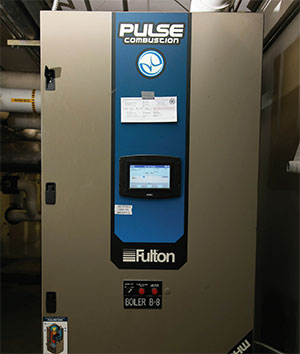In October of 1885, 341 students walked through the front doors of The Industrial Institute and College (II&C). Thanks to the energetic campaigning that started in the 1860s by Sallie Reneau and a generous donation that included buildings, grounds and city bonds in the amount of $50,000 from the city of Columbus, an educational opportunity unlike any other had just begun.
Today, Mississippi University for Women sits on a 114-acre campus that hosts four colleges and an annual headcount over 3,000. This spring, the campus will bloom with Japanese maples, magnolia trees and azaleas. With more than 130 years of history and 23 buildings on the National Register of Historic Places, constant hard work, attention and planning are required to ensure that today’s campus will continue to be a home away from home for the next generation.
Much of The W’s campus beautification can be attributed to members of the Long Blue Line. Most recently, the class of 2016 donated $2,700 for three ginkgo trees and five magnolia trees to be planted across campus for future students, faculty, staff and friends of The W. Just the year before, the class of 2015 donated $2,000 for benches and trash cans to be placed alongside the new walking trail that was made possible due to a $244,255 grant from the Blue Cross & Blue Shield of Mississippi Foundation.
Donations and the allocation of financial resources play an important role in the upkeep of campus. What is equally important is the responsibility of sustainability.
 Jones and Kincannon are residential halls that rest on the south side of campus and are home to transfer and freshmen students, respectively. Throughout the halls, 188 fluorescent fixtures were replaced with new energy-efficient LED drop-in replacements. Along with the replacements, occupancy sensors were added throughout the common spaces such as hallways and lobbies to ensure that lights were used only when necessary. Before the replacement lights illuminated for 24-hours a day and seven-days a week. The result was an annual savings of $3,400 per residence hall.
Jones and Kincannon are residential halls that rest on the south side of campus and are home to transfer and freshmen students, respectively. Throughout the halls, 188 fluorescent fixtures were replaced with new energy-efficient LED drop-in replacements. Along with the replacements, occupancy sensors were added throughout the common spaces such as hallways and lobbies to ensure that lights were used only when necessary. Before the replacement lights illuminated for 24-hours a day and seven-days a week. The result was an annual savings of $3,400 per residence hall.
“We are always looking for better solutions and opportunities with the help of the sustainability committee and the energy management committee,” said Ashley Pounders, GCA energy coordinator.
The halls weren’t the only place to receive updated lighting. In Hogarth Dining Center, 45 high-heat and high-energy bulbs were replaced with LEDs. The previous bulbs used 50-watt halogen, but are now only using 7 watt LEDs. The result was an annual cost savings of $1,900.
The largest energy savings was the result of replacing all 224 street lights on campus. By replacing each light with LEDs, it will save 73, 584 kWh per year in energy and $8,000 in annual energy cost. In addition, photocells were added to the lights to replace unreliable timers. Around $1,400 in additional annual savings was earned when all 12 street lights surrounding university apartments were retrofitted with LED Bulbs.
Lighting hasn’t been the only priority on campus with sustainability in mind. All 310 faucet aerators and 1,007 showerheads on campus, as well as Plymouth Bluff, were replaced with low-flow options. The change will limit the usage of gas consumption for water heating and overall water usage across campus. Even better, it was all free due to the ATMOS Energy Smart Choice Program.
“Our goal is to be smart both financially and sustainability-wise. It just makes sense to take advantage of all opportunities,” added Pounders.
Repurposing has a key role in sustainability efforts on campus. For a short time after the tornado in the early 2000s, a temporary recreation facility was installed on campus. Many people on campus referred to it as simply “The Bubble.” A boiler from the temporary facility was recently repurposed for the Hastings-Simmons residence hall. By repurposing the boiler, it allowed Hasting-Simmons and Columbus Hall to operate on two independent boilers, creating greater energy management and efficiency.
In October 2009, the IHL Board created an Energy Council to improve IHL energy management practices with support from the system executive office. The Board approved three energy council initiatives: the adoption of a system-wide sustainability policy; a system-wide approach to energy management; and an energy conservation goal to reduce energy use per square foot by 30 percent by the end of the fiscal year 2015 using the fiscal year 2006 as the baseline year.
Since then The W has reduced its energy usage by nearly 30 percent, with an estimated cost avoidance nearing $2 million.

